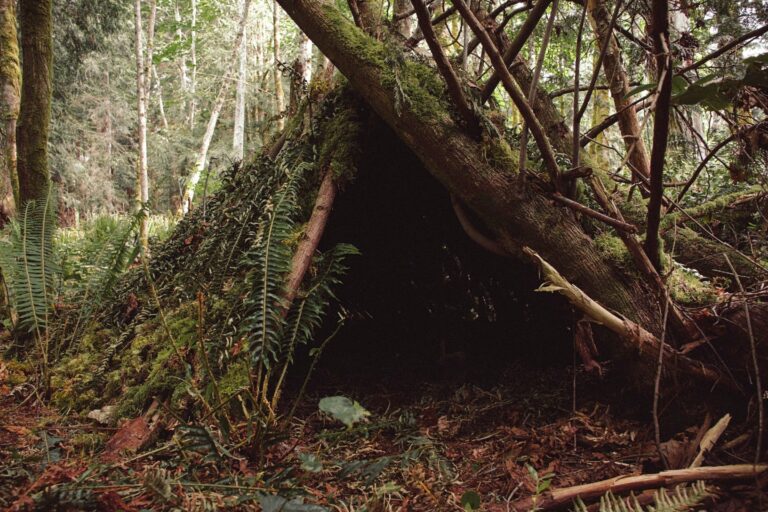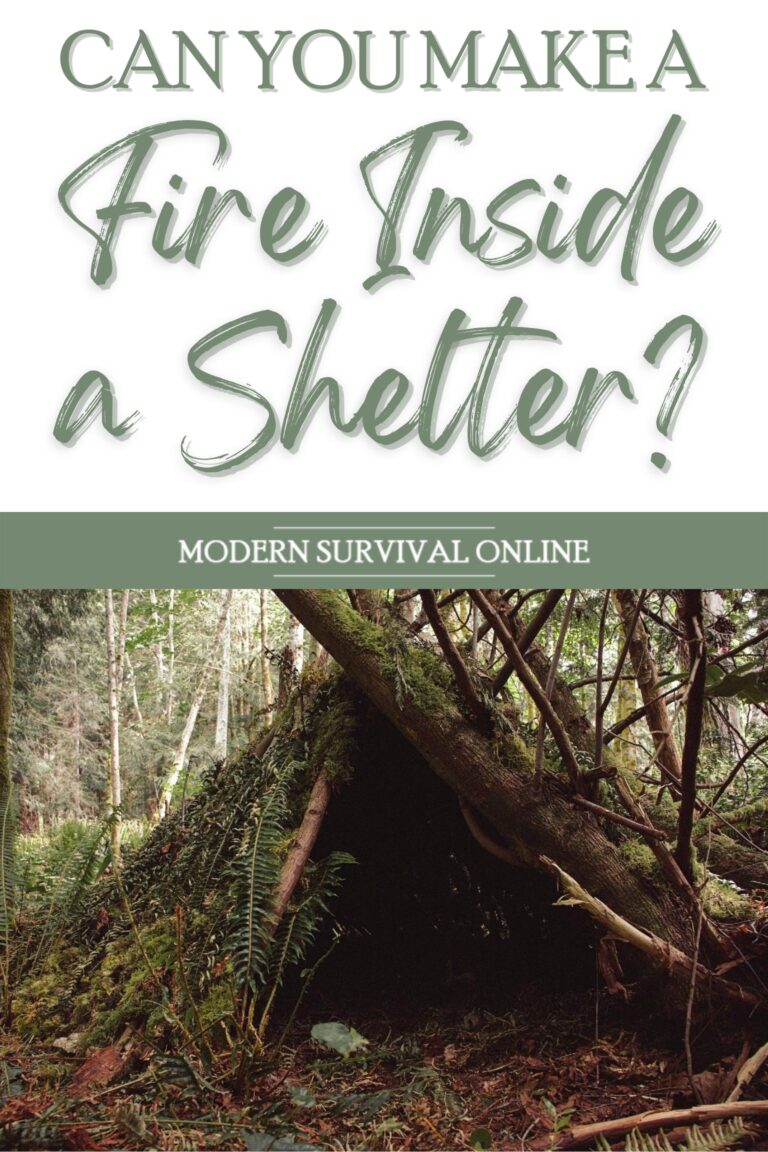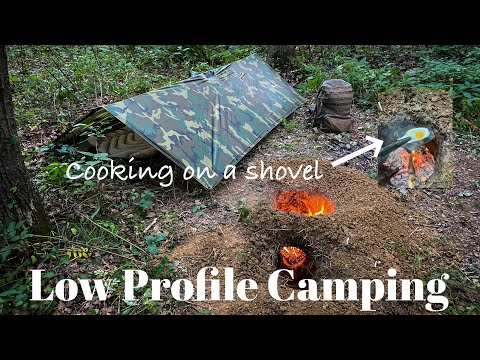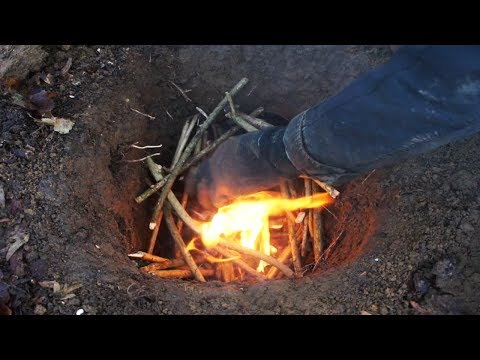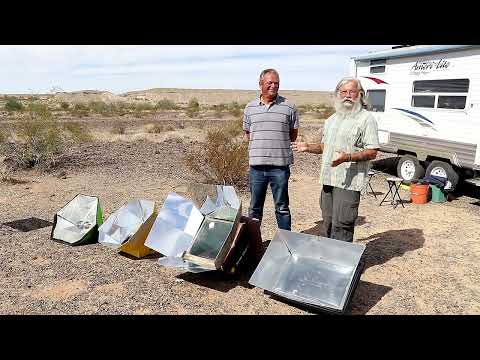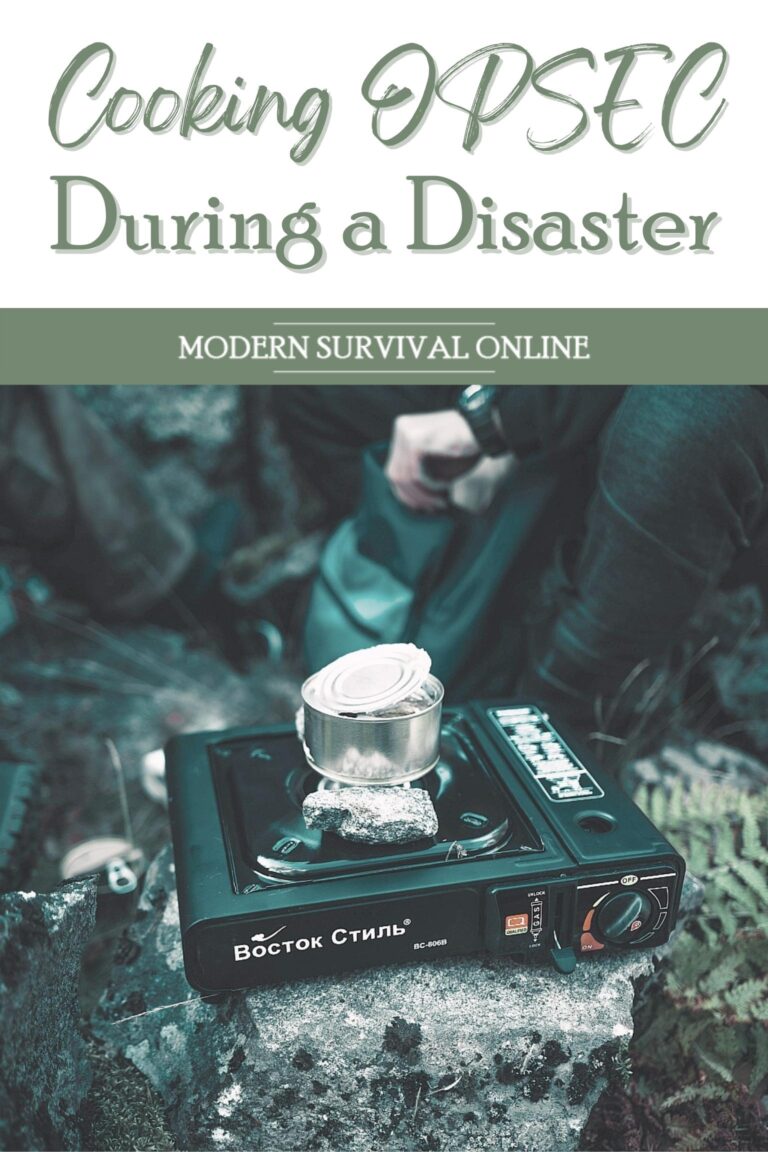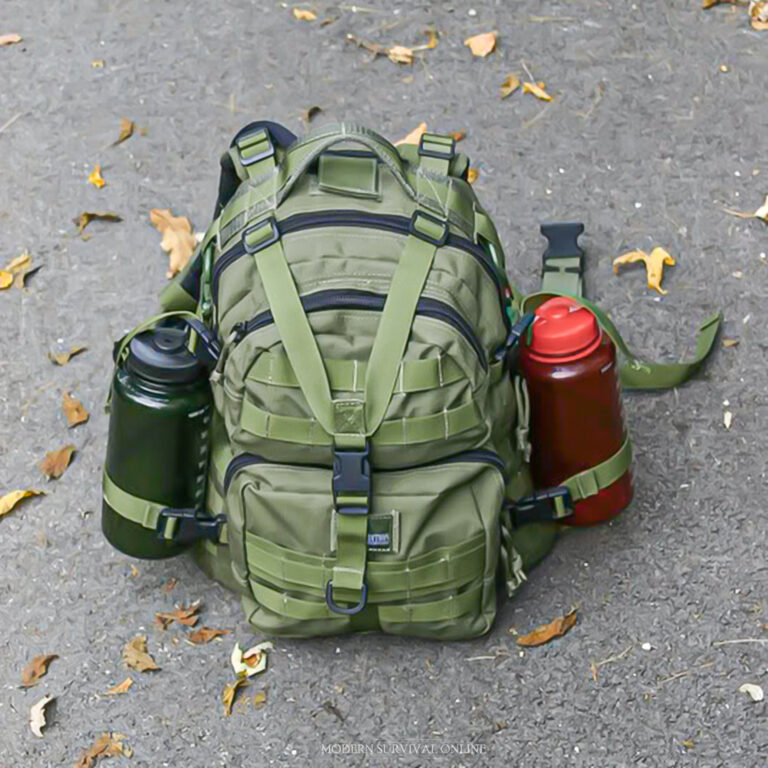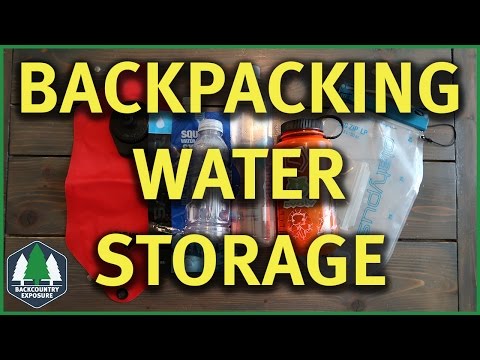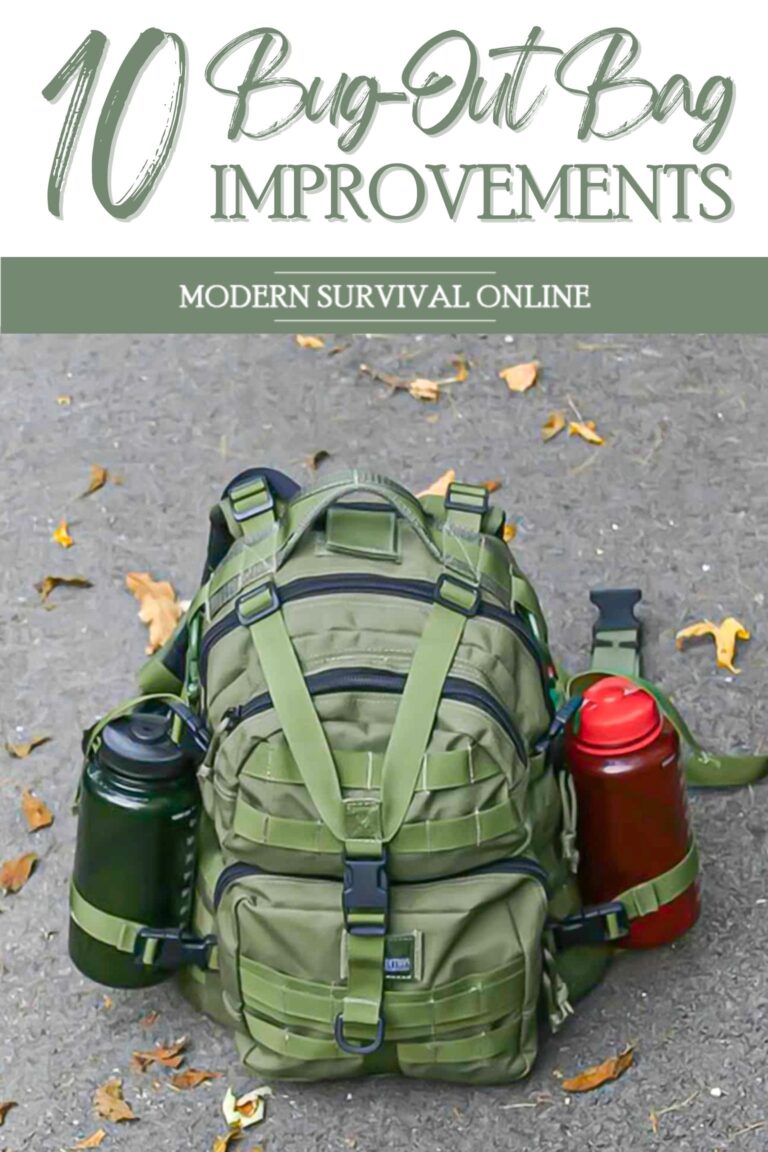Probably the most popular, and the most common, theoretical survival situation that preppers game out is that of a woodland survival scenario.

Forests all over the world, dark, deep and enticing, all have a nearly mythic proportion in our minds.
We are drawn to the woods while we are simultaneously afraid of them, and whether you are merely driving through a heavily forested region or off on some woodland adventure like a hunting or camping trip, there is always an opportunity for mishap in the forests of the world.
It is an easy thing to become lost in the woods, and though it is one of the most resource abundant environments you could be facing a crisis in they are no less deadly than more inhospitable places.
You’ll need plenty of forest lore and just as much survival know-how if you want to stand a chance of surviving a scary scrape in the woods.
Though the specifics of your personal crisis could be pulled from virtually limitless defining factors, the fundamentals of survival in the forest really don’t change.
In an effort to forearm you against disaster, we will be bringing you a step-by-step overview of surviving in the woods.

Survival in the Woods is About Priorities- Survival Priorities!
There’s an awful lot of literature out there in the world, both on the internet and inbound books, about the specifics of surviving various events in various environments.
Though undoubtedly useful and perhaps a comfort to those seeking to survive incredibly specific circumstances, the contents of all such books are built upon the foundational elements of survival, or genuine survival necessities.
What are the survival necessities? As you’re likely expecting, these are the things a human being must have in order to survive, literally to sustain life.
Put another way, lacking any of the survival necessities, for a long enough period of time depending on the item in question, will see your body assume room temperature in short order, if you catch my drift.
Many survival and outdoor experts have their own spin or take on it just how many survival necessities there are, and that list can range from three, to five to 12 or more depending on how pedantic and specific the writer wants to be. Personally, I advocate for five.
Those five necessities are air, shelter, water, food, and security. Breathable air, mercifully, is something we can generally take for granted in most environments unless there’s a precipitous decline in air quality.
Shelter, protection from the elements, is the next big necessity, and more so even than dehydration can kill quickly when conditions are ideal. After that is water, as it only takes a couple of days without any water to drink for a person to perish.
Food is naturally a concern for keeping energy levels up, but you can go for weeks without a bite to eat before you die.
Lastly is security, as protection against injury, be it from man, beast or even simple accident is always critical though this is rarely near the top of the survival hierarchy.
To survive, all you need to do is provide those five things and life can go on. That’s it. Easier said than done, right?

Just-in-Case EDC Carry for Woodland Survival
As you might have already determined, it really, really helps to have the right gear on hand in a woodland survival scenario.
While it is true that well-rounded and highly developed austere environment skill sets can save the day, more on that later, nothing beats having access to the force multiplying and efficiency boosting capability that tools provide.
The trick, of course, is that most of us won’t know or ever truly be able to know when or if we will find ourselves in a woodland survival situation.
Sure, a long-distance hike might go awry or a remote hunting expedition. It is easy to plan for those sorts of contingencies, but not for the other one in a million occurrences the continue to confound our best efforts to stay safe.
The solution to these worries is to constantly have on hand a few, choice survival items that are useful in all kinds of crisis situations, not just woodland settings.
This smart, minimalist approach to EDC readiness will serve as a painless but capable insurance policy against getting caught out.
Sturdy Knife
Probably the most fundamental tool that any prepper can carry is a good knife. Folding or fixed blade, the important thing is that you have one and if you want to hedge your bets make it a really strong one.
From lopping off branches for shelter creation to shaving bark for kindling and even fashioning into an improvised spear, a knife provides us with virtually limitless utility on our daily forays and in survival situations.
Paracord Fob or Bracelet
Cordage is always essential in a survival situation, usually for shelter creation but sometimes for crafting other tools or weapons and even for first aid purposes.
Strong cordage and a working knowledge of knots and bends can replace an entire tool set if you are crafting.
Naturally, no one wants to carry around a hank of cord every time they walk out of the house so you can ensure you always have a useful link with you by wearing a paracord bracelet or keeping a paracord fob on your keychain.
Firestarter
Fire is an ancient tool and remains a primordial force and that you can put to good use in a survival situation.
Getting a fire started using primitive methods is something of a badge-worthy skill for Preppers, but you’ll be far better off in a pinch relying on modern tools for the purpose.
A ferro rod and striker, perhaps integrated into your paracord bundle, or even a classic disposable lighter can get a fire going in virtually any conditions.
Button Compass
Direction finding is a key capability in a forest survival setting. Most folks have no idea just how easy it is to become disoriented in the woods until they are out there and don’t know where they are or where they are going.
You can prevent part of this unhappy occurrence by keeping a super compact button compass on you at all times, clipped to your watch band or keychain as appropriate.
Flashlight
People don’t do well in the dark, and you seriously won’t do well in the deep, true darkness of a forest beneath the canopy.
There is dark and then there is pitch black and you are likely to be dealing with the latter. Give yourself some insurance against having to get your affairs in order without the benefit of daylight by carrying a compact, long lasting flashlight on your person.
Not All Who Wander are Lost
No it is true you might wind up in a woodland survival situation through no fault or intention of your own, it is far more likely that some other activity or adventure in the woods will turn into a survival situation in those self-same woods.
For this reason, heading out into the forest without the right equipment is tantamount to idiocy.
You might be heading out on a hunting trip, extended camping expedition or a multi-day through hike.
Whatever it is, you should always carry with you a minimum basic kit to ensure that you can survive and sustain in the woods for a length of time.
Consider the items below.
Woodland Adventure Gear Checklist
Backpack
You’ve got to have a backpack to effectively carry all of the items you will need through the woods.
If you choose your gear with care and pack smart, this pack can likely be a lot smaller than you are imagining.
There are all kinds of good backpacks on the market these days and we have plenty of articles that will help you choose the right one for your needs on this very site.
Tent or Bivy Bag
Shelter is always a survival priority and your most fundamental, self-contained shelter that you can carry with you on your back is your tent or bivy.
One will provide you a little more room but is more complex to set up and tear down while the other is smaller, simpler but far less roomy.
Tarp
A tarp is a survival multi-tool when in the woods. It can be fashioned into a shelter of its own, used to improve an existing shelter, as a shade, as a ground cover or even for catching mass amounts of rainfall or water. Get a good one and keep it handy!
Sleeping Bag
Nothing beats a sleeping bag when things get really cold. A sleeping bag is likely going to be one of the largest and bulkiest things that you bring with you into the woods, but you should only omit this if you are traveling during the warmest seasons.
Ground Pad
The forest floor is many things but comfortable is not one of them. A ground pad will help keep roots, pebbles and countless other tiny obstacles from digging into you painfully and preventing you from getting meaningful rest.
It also serves as crucial insulation between you and the Earth which will act as a giant heat sink to suck warmth out of your body.
Emergency Blanket / Camping Blanket
Whatever kind of clothing you have brought with you it is always valuable to have another means of adaptable insulation.
A blanket is best, the which type is best suited for survival in the woods is a contentious subject.
Emergency space blankets way next to nothing and are highly efficient but comparatively fragile and annoying.
Typical camping blankets are a little bit bigger and not quite as warm but most folks prefer them because they are far more comfortable and comforting.
Season/Weather Appropriate Outerwear
No matter where you are going, no matter for how long, no matter the place and no matter the season carrying with you seasonally appropriate outer garments is mandatory.
Way too many people heading out into the woods have a close call with hypothermia because they thought they were just going to be out for a short, brisk outing only to run way overdue and then get a nasty chill once night falls or bad weather happens upon them.
Compass
A proper compass is invaluable in the woods, and even as the most rudimentary form of navigation knowing exactly which direction you are heading will give you a tremendous amount of confidence when it comes time to affect self rescue.
A larger field or lensatic compass is an advantage so long as you know how to use it but you can make do with a simple button compass in a pinch.
Maps
Absolutely nothing beats a good set of maps when you are lost. Using some basic skills and in conjunction with your compass you will easily enough be able to navigate directly to your destination or to help, or at the very least start heading in a direction that will eventually result in rescue.
Make sure you take all necessary precautions to weatherproof these maps ahead of time.
Boots or Trail Shoes
Moving through the woods, or any natural environment, really, necessitates proper footwear for best efficiency and protection. A good set of lightweight hiking boots or technical trail shoes is ideal.
Avoid heavy, old-fashioned military boots or construction site boots at all costs, and don’t dream of doing it in fashion sneakers or other similar footwear.
Water Bottle / Hydration Bladder
Water is a survival essential, as mentioned, and that means you need to start off with some clean drinking water on hand and just as importantly have a good, multi-purpose vessel that can hold more water you collect from natural sources.
Water Filter
Like we talked about previously, drinking from those natural sources could be an exercise in intestinal distress they could further waylay you when you can least afford it.
A portable, high-efficiency water filter will remove 99.99% of your troubles from any found water supplies.
Rations
Though you can go for quite a long time without eating before you starve, you’ll be badly degraded or even incapacitated before that comes.
Shelf stable, durable and calorie-dense foods are the name of the game when it comes to woodland rations.
Beef jerky, nuts, trail mix, dried fruit, and similar fare makes for highly portable and efficient foodstuffs.
Duct Tape
Duct tape is definitely a meme, but it is a meme that has earned its status. There is almost nothing you cannot construct or fix with duct tape, and you are crazy to head into the woods without it.
If you have the room, you can leave it on the roll but you can save space by unspooling it and re-wrapping it around your flashlight, water bottle or a similar item.
Ziploc Freezer Bags, gallon size
Freezer bags are another one of those sleeper survival items that you’ll regret ever going without once you use them a few times.
These durable plastic bags are ideal for waterproofing your gear, collecting water, and countless other tasks.
I invariably recommend Ziploc brand freezer bags with classic, clicky zippers. They hold up the best, and whatever you buy make sure you avoid those weird slider tabs since they aren’t as secure.
Cordage
Cordage is another survival essential, useful for all kinds of tasks. It is eminently useful for creating or placing a shelter, crafting tools, using snares or traps, and for all sorts of other utility chores.
Paracord is probably the most ubiquitous favorite these days for its incredible strength and modest cost, but you can also use the smaller, thinner, and lighter accessory cord for many of the same things.
Flashlight or Headlamp w/ Batteries or Extra Charger
Extended for raise into the woods demand extended run time on your lights. A flashlight will need extra batteries or a power bank if it is a rechargeable model.
Also consider a headlamp to give yourself easy-to-use, hands-free lighting for taking care of navigational or campsite tasks after dark. Holding a flashlight with your teeth sucks.
Knife / Multi-tool
A heavy-duty, fixed blade knife is a must for serious survival situations or recreational pursuits in the woods.
You’ll use this for innumerable chores, including processing sometimes tough firewood to size.
Also, consider the inclusion of a compact multi-tool to give yourself a variety of specialized bits for taking care of various jobs that the knife can’t handle.
First-Aid Kit
You don’t need me to tell you that countless injuries Great and Small can occur in the middle of the woods, and chances are your survival situation will properly start because of some injury or another.
A well-equipped first aid kit with gauze, tourniquets, materials for splints, various medicines, super glue and electrolyte replacement powder or gel makes for a good basis.
Mess Kit
You won’t always be eating out of hand, and even if you can it is far more sanitary to use a proper mess kit.
For creating a proper dinner over a fire, a metal pot or large mug, cutlery and more will have to take the place of a proper table setting.
Hygiene Kit
You might think that I survival situation is no time for such niceties as getting clean, and you’d be half right.
However, a lack of proper hygiene and long-term survival situations will further exacerbate your problems.
Keeping your body clean and maintaining it will reduce skin ailments, and infection vectors and also give you a much-needed morale boost.
Fire Kit
Every outdoor adventure kit should include a comprehensive set of fire starting tools and materials.
At least two of the following, ferro rod, lighter or survival matches, and a good supply of tinder, be it a commercial product or homemade stuff like dryer lint or char cloth.
Bugging Out into the Woods
As hard as it might be to imagine for some people, you might actually choose to head into the woods during a survival situation.
If society is falling to pot all around you, or you need to move out on foot to a safe fallback location and the shortest distance is through the woods you might be transiting through or surviving in the forest for some time.
If that is the case, you’ll need even more supplies than you would normally carry with you to make a go of it.
Look to the list above and basically increase all of your capability in every category, either for a greater duration away from resupply or for taking care of a greater number of people.
Often times the difference between a day pack and a bob or inch bag is simply the number of supplies that are carried!
Making Due with Nothing – Primitive Survival
What about surviving in the woods with absolutely nothing except the clothes on your back? Is it possible to survive if you lose all of the gear you have spent so much time accumulating for the task? Is it even possible?
I can tell you with certainty that yes, it is, although the demands placed on the survivor begin at zero or even higher.
This is where having the skills to pay the bills is absolutely essential. Primitive survival skills or austere environment sustainment training are what is required.
Beginning with nothing but their own two hands if you have the skills you can nap stones to create usable cutting tools, create cordage, harvest wood, build a shelter, get a fire going, find and gather or hunt food and do everything else you need to.
It will be a hell of a lot harder and take a hell of a lot longer but it can be done. If you want to give yourself the ultimate insurance against being truly stranded in the woods we have many articles on developing such skills here on the site.
Time Spent Thinking Clearly is Never Wasted
Before we get to our step-by-step procedures it is imperative that I impress upon you how critical it is that you stay calm whenever you find yourself in the middle of a survival situation in the woods.
Maybe you are lost, maybe you or someone else is badly injured, even near death. You could even be pursued through remote backcountry by a deranged killer.
Whatever it is, you need to stay cool and think clearly about the problem so that you can start problem-solving to fix it!
Regarding my own close calls in the woods and the stories I have heard other survivors, students or otherwise, regale me with the rising panic you feel when far from civilization and help is a real, primordial thing and can completely unseat your single, best asset- your brain!
As the saying goes, when the chips are down sometimes there is nothing left to do but look the devil in the eye and take care of business.
Panicking will not help anything, and it sure as hell won’t make you feel better. With that said, brace up and let us get to our steps.

Your Step-by-Step Plan for Surviving in the Woods
Wherever you are, whatever has happened and whatever you have you can depend on this step-by-step plan to help you manage risk, mitigate danger, and start making meaningful progress toward a positive outcome.
Assess the Situation
There comes a point in any woodland survival situation when you realize you are actually in trouble. This feeling might creep up on you all at once or it might slam into you with a suddenness and ferocity of a cannonball.
Whatever has happened and whatever the situation, so long as you are out of immediate, life-threatening peril it is time to start assessing the situation and understanding it so you can work towards resolving it.
If you are lost in the woods, or just suspect you are lost, you need to stop and begin at determining where and when you went awry, possibly retracing your steps.
If you or someone else is injured, you need to take stock of the injury, the overall condition of the victim, and what capability they lack or still have.
The basis of the problem might boil down to I don’t know where I am, you or someone else might not be able to move, no one is looking for you or knows you are overdue or you are at risk of exposure or some other threat. Don’t let the enormity of the perceived danger you are in blur your judgment.
Collect Yourself
You are scared, possibly hurt. At this moment, panic is likely to come crashing down on you like a power hammer if you have never been in a similar situation before.
You’ll be thinking about all the things you are going to miss and people who are going to miss you because of your impending death.
You’ll think about dying, unfound and unknown in the woods before rotting away to nothing except a pile of bones to be scattered by coyotes.
Knock off the daydreaming, it isn’t that bad, I promise, and take heart because countless other people over the millennia have been in the exact same situation you are in and survived.
Don’t give in to those feelings of despair, fear or hopelessness. Survival is a mental game, and the first opening move in this game is taking control of your thoughts and emotions.
Again, if you are in no grave and immediate danger give yourself five or 10 minutes to just chill out and get your head right. Reacting out of fear or anxiety can see you blundering into a mistake that can make a bad situation way worse.
Prioritize Shelter ASAP
The importance of shelter cannot be overestimated in any outdoor survival situation. It is exposure, not lack of water, not starvation, and definitely not animal attack, that is statistically the biggest killer in woodland survival scenarios.
And it doesn’t have to be in the middle of winter, either, for you to succumb to the elements.
This is why so many carefree day hikers who wind up lost or overdue for any reason find themselves in a life-threatening situation because they failed to pack appropriate clothing for such a contingency.
Temperatures drop precipitously at night, and a chilly spring evening that finds you soaked from rain or just perspiration can rob you of body heat with frightening speed.
Then you get tired, sit down or even lie down on the ground. That could soon spell disaster for you since the ground acts as a giant heat sink, further stealing precious body heat from you.
Before you know it, you are hypothermic, and improving your situation becomes even more challenging.
For this reason, as soon as you have your wits about you it is imperative that you begin creating a suitable shelter at once unless you are absolutely, positively sure that you can make it to rescue or even better shelter before things get dark.
This might mean pitching a tent, improvising a bivouac, or constructing a field expedient shelter from branches, leaves, and other natural material along with building a fire.
Working knowledge of knots and bends and even a little bit of high-strength cordage (like paracord) will go a long way towards helping you craft a warm shelter quickly and easily no matter the conditions. You can learn all about the following useful knots here:
- Sheet bend
- Bowline
- Prusik knot
- Farrimond hitch
- Constrictor knot
You might think you can power through the night, deal with a little drizzle, or generally put up with terrible conditions, but without excellent apparel and fitness to back you up, you are quite literally gambling your life on that assumption.
Take Stock of Resources
Now that you have reasonable shelter precautions taken, it is time to take stock of the rest of your supplies.
First, if you are uninjured and otherwise healthy, able to do whatever you need to do to improve your situation, count yourself lucky and give thanks for the blessing. Things become geometrically harder when you are injured or unfit.
Next, if you have any supplies with you, of any kind, determine what they can do for you under the circumstances. Keep in mind that even garbage may be helpful if you know how to use it right.
Do you have food or other rations with you? Do you have a supply of clean drinking water? Do you have something that can hold water, if you don’t have water on hand?
A water bottle, cup, empty can, or even plastic sheeting can be repurposed as a vessel for catching, holding, and carrying water.
Do you have anything that can help you see at night or create fire easily? Anything that might signal to rescuers, something like a flashlight, torch, brightly colored cloth, mirror, or something else?
Do you have tools and weapons, things like knives, saws, or hatchets? These can be precious resources for building shelter, improvising signals, gathering firewood, and more.
Guns are obviously useful for fending off threats or perhaps bagging game for food in a long-term survival situation but their deafening report also makes a great signal. More on that in a bit.
Wait for Rescue or Affect Self-Rescue?
This is one of the most contested elements of woodland survival, even among experts in the field.
Should you wait for rescue or attempt to self-rescue, i.e. find your way out of the woods to safety and civilization?
There is no straight answer, but generally you are almost always better off staying put, especially when injured, so long as there is the expectation that someone, at some point will come looking for you and generally know what your travel itinerary was.
Especially if you were out in the woods hunting, hiking, or camping and cared enough to file a flight plan with a trusted friend, relative, or just the rangers office if applicable you can likely rest assured that the bushes will be beaten looking for your person in fairly short order when you are declared overdue.
How long that depends on your itinerary and whether or not you stuck to it.
If you did not file a flight plan or for whatever reason have badly deviated from your expected route, rescuers might not know where to start looking or could be looking in all the wrong places.
That likely means you’ll need to attempt to hike out on your own. Similarly, if you or someone else require care and don’t have any time to waste you might need to get a move on to shorten the time it will take to render them to higher level care.
Signal for Help if You Can…
Even if no one is going to be looking for you, if there is any chance whatsoever that other people will be anywhere in the vicinity of your location you should signal for help using a variety of means.
Passing aircraft, ground traffic, pedestrians, and even, just maybe, satellites could notice something amiss in an area that will attract attention, and with attention comes rescue nine times out of ten.
There are many ways to signal to stress, both auditory and visual. A fire is one of the very best, day or night.
Particularly in the daytime during clear conditions, burning a fire supposed to produce thick black or white smoke that contrasts with the open sky will draw immediate attention in a wooded environment due to constant risk and concern over wildfires.
You can try burning rubber or plastic to produce black smoke, or young or damp wood to produce voluminous white smoke.
The fire is not an option or not safe, and you can get clear of the canopy, try laying down a highly noticeable symbol that can be seen from the air, either an SOS spelled out using branches or carved into the ground or a highly visible, colorful tarp that you can swing around your head.
Auditory signals also work well. The shrill blast of a survival whistle can be used for SOS communications and as mentioned before the report of a firearm.
If you are not particularly coordinated or comfortable using Morse code for a “proper” SOS, a repeating sequence of three evenly spaced reports is a universal signal for distress.
A firearm can often be heard over a longer distance but a whistle has the advantage of not requiring ammunition to function.
Understand that most forests are enormous places and it is easy to miss or otherwise overlook any rescue signal even when people are actively looking for you.
Do not despair even if a low-flying plane or helicopter completely misses what should be, to you, the most obvious signal in the world. Keep your chin up and keep at it!
Orient Yourself toward Probable Rescue if You Can’t
Let us say that, whatever the reason, rescue is just not in the cards or is vanishingly unlikely. Maybe you’re in a truly inhospitable, remote, and dense patch of forest.
Maybe absolutely no one knows you or cares about you and you didn’t file a flight plan in any case.
Maybe you found yourself taken to an unknown forest against your will and have affected escape.
All that matters is it is up to you to rescue yourself by hiking out or reaching someone who can help you.
Before you grab your gear and take off and a mad dash to get out of the mysterious woods you are currently in, you need to orient yourself towards the most probable rescue achievable.
First things first, you need a way to establish what direction you are heading in. A compass is best, but you can use the sun lacking a compass.
Which way should you head? If you have any knowledge of the area you are in you were hopefully smart enough to take note of major landscape features and settlements in and around the area.
For instance, if you know the forest you were moving around in is situated entirely north of a massive interstate highway that runs east-west, all you would need to do is head south until you bump into the interstate and could flag down help.
Even in remote locations, you can use this dead reckoning method of navigation to find your way with certainty.
If you are able to locate a river or even a prominent stream you could follow it to another major landmark or even to human habitation itself.
Lacking such knowledge or major landmarks your best bet is to try and get high in the short term. No, I don’t mean doping up to ease your nerves, I mean gaining altitude.
A hill, a safely climbable tree, something that will let you survey the land and look for the best approach to get somewhere where there is at least a chance of signaling rescue.

Sustainment – Food, Water, and More
Understand that your predicament, unless it is a very minor one, is unlikely to be over quickly. It could take days, even weeks before you are rescued or able to affect self-rescue.
That means you’ll need provisions, namely water, and plenty of it, along with food to maintain energy levels and keep your brain operating in top gear.
At first, you will only have what supplies you have on hand and that means you need to procure more from the environment around you.
As mentioned above forests are far more plentiful when it comes to resources, including provisions, then other environments but you must know how to access, harvest or otherwise obtain them.
Food in particular is a dicey topic. There are all sorts of animals, mammals, reptiles, avians, and insects that live in forests that make for good eating but knowing how to catch, trap, or otherwise kill them and prepare them is an entire skill set unto itself.
The same thing goes for plants, and there are an abundance of leafy vegetables, nuts, berries and even mushrooms that can make for excellent, healthy, and delicious eating.
But as you probably already know the chances of eating something that is toxic, perhaps lethally so, are definitely there when consuming plants and fungi.
You must acquire this lore ahead of time if you don’t want to roll the dice every time your stomach starts growling and you reach for an appetizing looking berry or mushroom.
Learn about and look for the following wild edibles that are common all through much of North America.
- Cattail
- Dandelion
- Wild Asparagus
- Acorns
- Chanterelle Mushrooms
Trapping is also a worthwhile pursuit but this is a skill that requires considerable skill and refinement to employ successfully.
Don’t worry so much about catching large animals as this is quite difficult, the traps needed to bring them down are usually just as dangerous to you, and they are less plentiful in the first place.
Smaller game is more common and much easier to catch or slay. Consider the following easy-to-get critters for supplementing your rations via traps and snares:
- Birds
- Squirrels
- Mice
- Groundhogs
Water too, despite a reputation for clean and unadulterated pureness, when found in nature, is likely to be filthy and full of germs that can make you seriously sick, or perhaps, though rarely, kill you.
A personal emergency water filter should be included in your compliment every time you step out the door to head into the woods for any reason or even when you are traveling through a region covered in dense forest.
So it is possible to drink from a natural source and go several days before getting sick, when dehydration or other effects take hold it could result in your condition and capabilities heading into a downward spiral, further hampering your efforts to survive.
Never, Ever Give Up!
Lastly, and most importantly, no matter how bad the situation looks, no matter how grim your outlook is and how dire the circumstances, never despair! Never, ever give up!
There is always something that you can do to improve your circumstances, and you should be buoyed by the knowledge that people have survived far, far worse situations than the one you are currently in and have come out more or less completely intact.
So long as you are alive there is cause for hope. So long as you can put in work you can bend the world to your will. Don’t forget that!
Conclusion
A woodland survival situation is scary and something of an iconic scenario in the prepping sphere but one that most people can surmount with a little bit of knowledge and a clear head.
Luckily, most forests are capable of supplying us with ample resources to fulfill survival necessities when the chips are down.
A little bit of prior preparation and accumulation of wilderness knowledge will prove sufficient to get yourself, and potentially someone else, out of a sticky and scary situation in the woods.
Frequently Asked Questions about Woodland Survival
I regularly field the same set of questions from students about woodland survival. A few of the most common are below.
I Live in a Warm Area and It Is Springtime. Is This Extra Clothing Really Necessary?
Yes, warm outerwear is essential virtually everywhere on Earth and at all seasons if you are heading into the woods.
Temperatures plummet quickly at night, and if you are already wet from water or perspiration and exposed to cold temperatures and a little wind you can be hypothermic in a frighteningly short period of time. Always carry a windbreaker at the very least.
Do I Really Need To Pack Extra Food? Isn’t There Plenty To Eat in the Woods?
Carrying extra rations with you into the woods is always a good idea unless your field craft skills are top-tier.
There is plenty to eat in the woods if you know how to find it, harvest it correctly, and make it safe much less palatable to eat. If you don’t have your skills tuned up you’ll need to rely on what you are able to decisively collect.
What Are the Top 5 Things Needed To Survive in the Woods?
The same things you need to survive everywhere. Air, shelter, water, food, and security in that order. Luckily the woods make it pretty easy to provide all of those things if you have the skills.
Get over the idea that there is some magic piece of equipment or a particular gear checklist that will guarantee your survival.
Can You Live off Foraging Indefinitely in the Woods?
A single person probably could if they were in a bountiful area and knew what they were doing with a high degree of skill and efficacy.
As always, winter will be a challenging and brutal time for gatherers. That being said, the likelihood of running into vitamin or mineral deficiencies is still quite high, and would likely need to be supplemented with hunted or other specialized fares.
Don’t I Need a Firearm for Woodland Survival?
You’ll never catch me recommending against a firearm, but in my experience, the usefulness of a gun is drastically overstated for woodland survival unless you are talking about long-term survival specifically.
Don’t get me wrong, they are invariably useful for various purposes, but the weight and space you’ll have to dedicate to a firearm, not to mention to other equipment to support and maintain it, is likely better spent on other things.
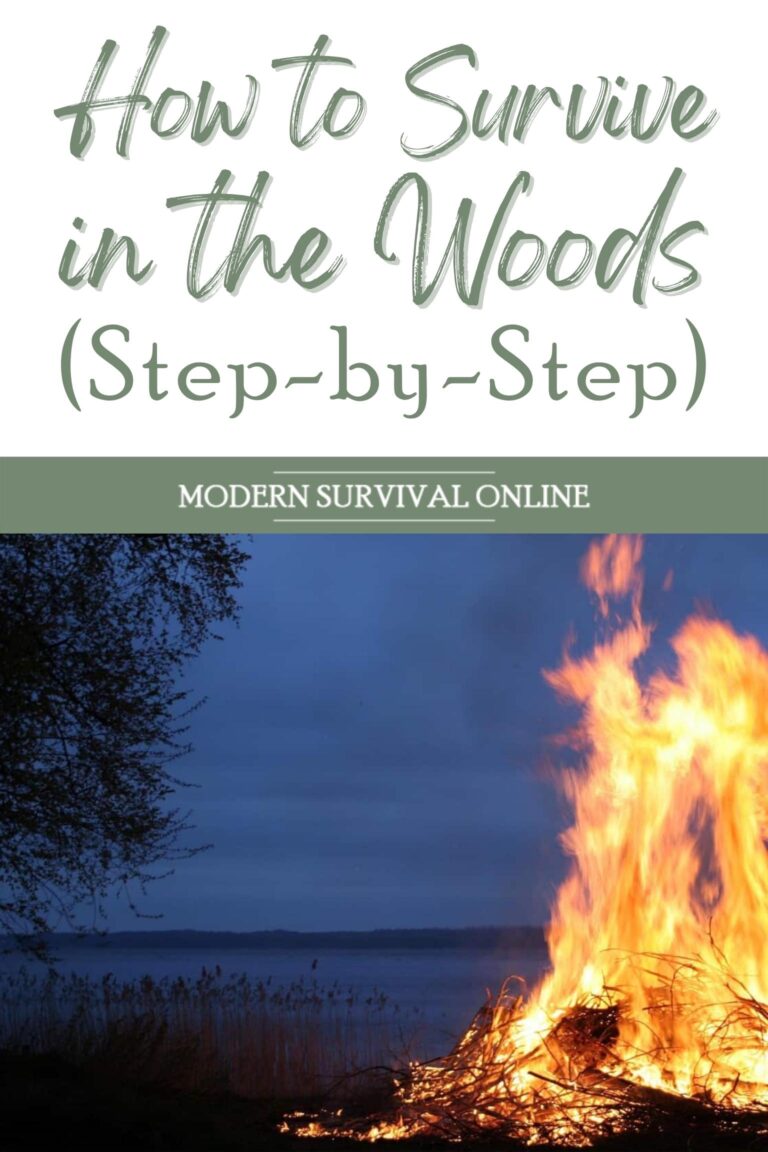
via Modern Survival Online https://ift.tt/st25RlF
